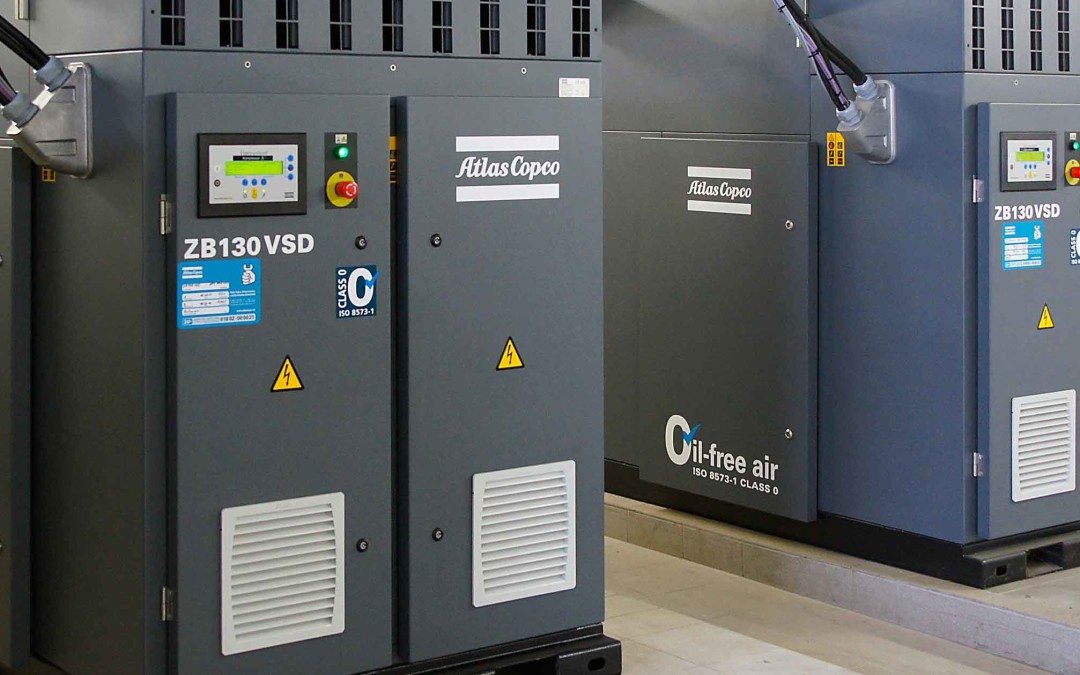Did you know it was not until the 19th century that large cities began to reduce the amount of pollutants in the wastewater they were discharging to the environment through wastewater treatment practices? For one community wastewater treatment plant in Germany that disposes of biological biodegradable waters originating from households, as well as from chemical processes, replacing surface aerators with turbo blowers helps save energy and ensures the process keeps moving all day every day.
Time for a Compressed Air System Upgrade after 40 Years
After 40 years of operation, the basin biology of the community wastewater treatment plant needed an overhaul from the ground up. The original design included four closed clarifying towers and two open clarifier basins. The basins were three meters deep and were aerated with large agitators, which was state of the art in the seventies.
When it was time for upgrade, the plant used the opportunity to invest in two new cascade basins, which are eight meters deep. Deep wastewater tanks reduce the space required and also increase pressure on the bottom of the basin, so aeration of the basin from below can dissolve the air in the water more effectively.
Reliability Needed when Air Compressors Run 24-7-365
Wastewater treatment processes are heavily reliant on bacteria that feed off of the organic waste and break it down into nitrogen, carbon dioxide and water.
Due to the oxygen requirements of the bacteria, two or three of the four air compressors installed for the application operate around the clock, depending on the degree of contamination of the wastewater. The fourth compressor serves as redundancy.
Bacteria can only maintain their activity for a few hours without oxygen, so its availability is extremely important. That’s why the wastewater treatment plant invested in Atlas Copco ZB low-pressure centrifugal compressors and a five-year maintenance agreement.
Higher Levels of Control Optimizes Energy Consumption
The turbo compressors are single-stage, speed-controlled variable speed drive compressors, which are controlled for energy optimization using the Atlas Copco’s ES 130T higher-level control unit. The low-pressure ZB 100-160 VSD blowers guarantee a continuous, highly reliable, energy-efficient and 100 percent oil-free air supply, which is important for eliminating the risk of oil contamination in the treated wastewater.
The motors have a contact-less electromagnetic bearing system, which ensures a “free from wear,” operation. The impeller is mounted on the motor shaft itself, which omits the gear completely, allowing for increased efficiency. Compared with conventional rotary lobe blowers, this type of drive achieves average energy saving of 30 to 40 percent, which may even be significantly higher in individual cases.
Explore Atlas Copco’s centrifugal blowers or contact us, and a representative will be in touch with you shortly. You may also be interested in the following articles:
- Why Your Facility Needs a Compressed Air Audit
- How to Know if You Need a Variable Speed Drive (VSD) Compressor
- When to Choose Screw and Centrifugal Blower Technology for Wastewater Treatment
Source: Compressed Air Blog


